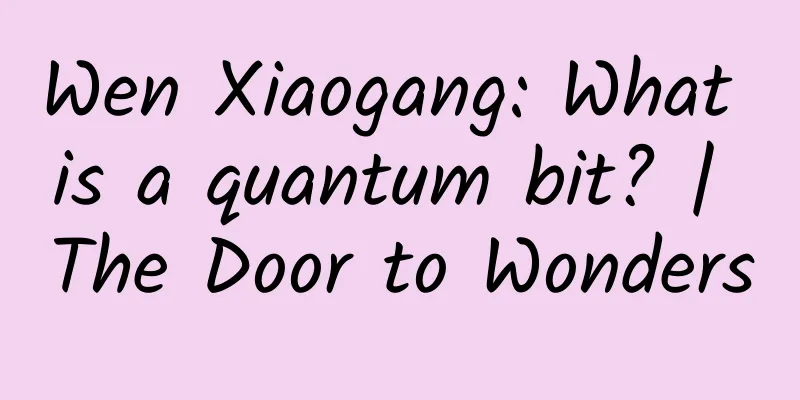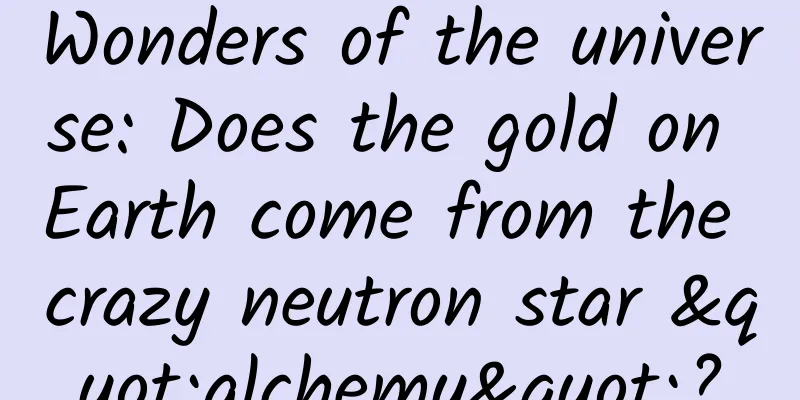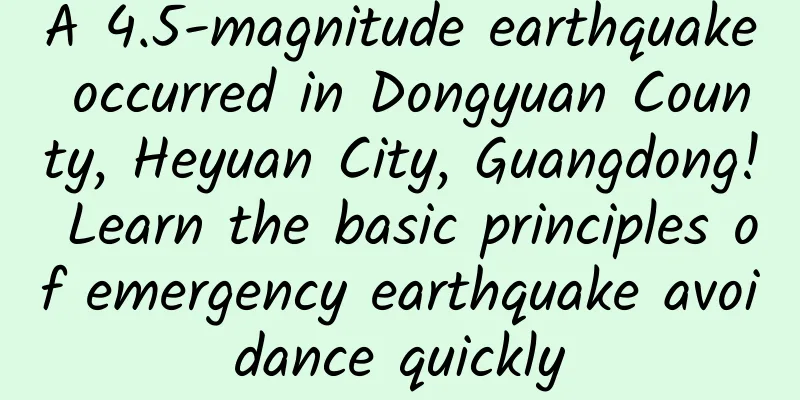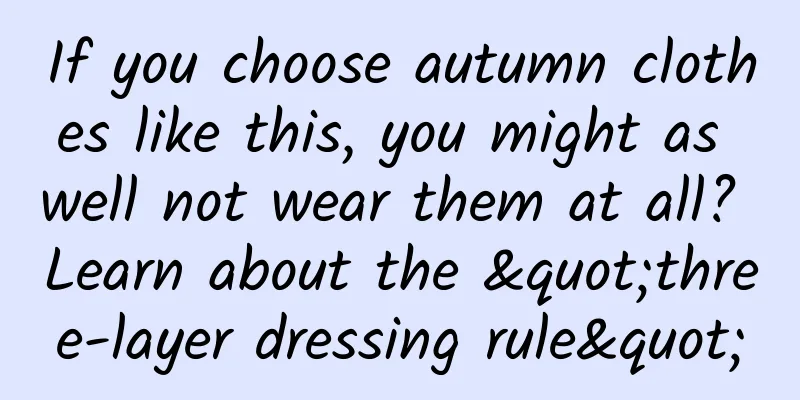Wen Xiaogang: What is a quantum bit? | The Door to Wonders

|
A bit is something that has two values: 0 and 1. If any object exists in two different states, then we can use these two different states to realize a bit. Bit is the basic unit of information and the protagonist in digital communication and digital computers. The information revolution we are experiencing now, such as mobile phones, WeChat, WiFi, TV, etc., depends on it. The qubit is the basic unit of quantum information and the protagonist in quantum communication and quantum computing. Its quantum properties create the magic of quantum communication and quantum computing. Some people even believe that the qubit is the basic building block of everything in the world. But what exactly is a qubit? What is its magic? Written by Wen Xiaogang (Tenured Professor and Green Chair Professor at MIT) Quantum mechanics is a very strange theory, and even experts dare not say they understand it. Niels Bohr, one of the founders of quantum theory, once said: "If someone is not confused by quantum theory, then he does not understand quantum theory." The great physicist Feynman also said: "I think I can say with confidence that no one understands quantum mechanics!" The mysterious and magical world of quantum Why is quantum mechanics so weird? Because quantum mechanics tells us that the fundamental concept of "existence" for understanding the world is not as simple as we think. We know that the object of physics research is the various existences in the world. What exactly is "existence"? Each of us thinks that we know this simple concept. But the concept of "existence" inherent in our minds is actually a classical concept. This classical concept of existence is summarized and abstracted from our observation of the macroscopic world. However, when studying and observing the microscopic world, we found that this classical concept of existence is completely inconsistent with the experimental observation of the microscopic world. We must rethink what "existence" is in our world? What is the concept? We found that we must introduce a new concept: quantum existence to describe the real existence in our world. This is the fundamental revolution brought to us by quantum mechanics-it has completely changed our worldview. Among all the physical revolutions in history, the quantum revolution is the most subversive, the most incredible, and the most reluctant of physicists. It was forced out by experiments. To this day, many physicists feel awkward and dissatisfied with the basic theory of quantum mechanics. The non-existent classical existence and the existing quantum existence If classical existence does not exist (that is, the concept of classical existence that we are familiar with does not apply to our world), then what exactly is the quantum existence that exists? Summarizing various experimental observations of the microscopic world, we find that quantum existence has the following basic properties: Take Schrödinger's cat as an example: if a live cat is an allowed existence, and a dead cat is also an allowed existence, then a live cat + a dead cat is also an allowed existence. When you observe a cat in this state, sometimes you find it alive, sometimes you find it dead, and you can't figure out whether it is alive or dead. More abstractly speaking, if state A is an allowed existence, and state B is an allowed existence, then there must be a state that is neither A nor B, which we call state A + state B , and it is also an allowed existence. This is the famous quantum superposition principle . It is the root of all the "weirdness" in quantum mechanics. The strange existence of state A + state B is called the superposition state of state A and state B. In quantum mechanics, we usually mark state A and state B as |A〉 and |B〉. In this way, the superposition state of state A and state B is marked as |A〉+|B〉. A live cat + a dead cat is also a permitted existence?! How is this possible? If you really believe this nonsense, then I ask you what kind of existence is a live cat + a dead cat ? Is it a live cat or a dead cat? This is indeed incredible. But our world is really such an incredible and magical world. Figure 1: An artistic depiction of Schrödinger’s cat, which is neither dead nor alive The incredible quantum existence mentioned above is the real existence in our world. The concept of classical existence inherent in our minds does not reflect the real existence in our world. This new understanding of existence was forced out by experiments. Just like all other physical theories, they are summarized and abstracted from experimental observations. Let me explain what kind of experiment forced out this new understanding of quantum existence ? Continuous classical quantities and discrete quantum quantities Our experiment is an experiment using an electron beam. We know that an electron is like a small ball that can rotate. The state of an electron is not only described by its position and speed, but also by its rotation state. The rotation state of an electron can be described by a directional arrow. The length of the arrow corresponds to the speed of the rotation, and the direction of the arrow corresponds to the direction of the rotation axis. This arrow that describes the electron's rotation is called the electron's spin. If we have a beam of electrons, the direction of the electron's rotation can be random, then the spin corresponds to a bunch of arrows pointing in different directions. Figure 2: The spin of an electron can be represented by an arrow. The first spin has a positive vertical component and a positive horizontal component. The second spin has a negative vertical component and a positive horizontal component. Different electrons in a beam of electrons will have different spins, which can be described by different arrows. We can use an instrument called a spin meter to measure the component of spin in the horizontal, vertical or any other direction. For example, when a beam of electrons passes through a vertical spin meter, the direction of motion of the electron beam will be deflected, and the angle of deflection is proportional to the component of the spin in the vertical direction. The vertical component of spin is a property of electrons. For the convenience of description later, we call this property of the vertical component the "color" of electrons. The vertical spin meter can also be called a "color" meter. When a beam of electrons passes through a transverse spin meter, we can also use the deflection of the electron beam to measure the transverse component of the spin. Similarly, we call this property of the transverse component the "hardness" of the electron. The transverse spin meter can also be called a "hardness" meter. What results do we get when we measure a beam of electrons with a "color" measuring instrument? According to the classical image of electron spin, we see that the vertical component of spin can be positive or negative, large or small. So we expect that when measuring the electron "color" (vertical component of spin), we will get a continuous distribution, as shown in Figure 3. Figure 3: The classical expectation for measuring the vertical component (“color”) of a spin is a continuous distribution. But when physicists actually measured the spins of these electrons, they found that the electron beam was split into only two beams (see Figure 4). This means that the electrons have only two "colors", which we call red and blue (that is, the vertical component of the spin has only two fixed values, positive and negative, corresponding to spin up and spin down). This result was like a bolt from the blue, leaving physicists dumbfounded. We have always believed that the electron's spin axis can point continuously in any direction, and that the vertical component of the electron's spin can also take values continuously within a range (that is, there should be a continuous "color" spectrum, like a rainbow). But the experimental results overturned this simple and seemingly impossible expectation. The experiment tells us that the vertical component of the spin can only take some discrete values. The phenomenon that the continuous quantity expected in this classical image can only take discrete values in reality is called a quantum phenomenon . It reflects the quantum nature of our world and is also the source of the name of quantum mechanics. Figure 4: The actual result of measuring "color" (vertical component of spin number): only two discrete values are seen, red and blue. The actual result of measuring "hardness" (horizontal component of spin number) is also only two discrete values, soft and hard. Four states or two states? According to the classical image, the electron's rotation can have infinite states, corresponding to the various directions of the spin. But in fact, when the electron beam passes through the "color" measuring instrument, it only splits into two beams. This seems to indicate that the electron has only two states: red and blue. In fact, the "color" measuring instrument only measures the "color" of the electron (the vertical component of the spin), which only shows that the electron's "color" has only two possible values. But the electron also has the property of "hardness" (the horizontal component of the spin), and different values of "hardness" can also give different states of the electron. In order to explore the property of "hardness", we can measure the "hardness" of electrons (see Figure 4). This is completely different from classical expectations: when we measure the "hardness" (spin transverse component) of these electrons, we find that the electron beam is also split into only two beams (see Figure 4). This means that electrons have only two "hardnesses", which we call soft and hard (that is, the spin transverse component also has only two fixed values of positive and negative, corresponding to spin left and spin right). In this way, "color" can take two values, and "hardness" can take two values. Then the electron should have (at least) four states. According to the two possible values of "color" and "hardness", we can use the following symbols to mark these four spin states: |red soft〉, |blue soft〉, |red hard〉, |blue hard〉 (see Figure 5). Figure 5: A graphic representation of the four states of electron spin. (This is an incorrect graphic.) If we measure the "color" of the electron first and then measure the "hardness" of the electron, we can measure these two properties and completely separate the four types of electrons: |red soft〉, |blue soft〉, |red hard〉, and |blue hard〉 (see Figure 6). Figure 6: After measuring the “color” of electrons, we then measure their “hardness”, which divides a beam of electrons into four beams, as if to say that electrons have (at least) four different states. But this simple inference is wrong. After we have measured the "color" and "hardness", if we measure the "color" of this red and soft electron beam again, naturally, we should only get red electrons (see Figure 7). Figure 7: We first measure the “color” of the electron, then the “hardness” of the electron, and finally the “color” of the electron. We expect to get this result. However, when we actually did this experiment, we unexpectedly got red and blue electrons (see Figure 8). This is an incredible result: when we measure the "color" of red and soft electrons, we actually have a 50% chance of seeing blue. (Of course, the other 50% chance of seeing red). Similarly, if we measure the "color" of the blue and soft electrons of |blue soft〉 again, we will actually see red and blue (see Figure 8), which is exactly the same as the observation result of |red soft〉. The more experiments we do, the more confused we become. Figure 8: First we measure the “color” of the electron, then we measure its “hardness”, and finally we measure its “color” again. This is what we actually get. To make this clear, let's do more experiments. Further experiments show that if we make the same measurement on two beams of electrons, |red soft〉 and |blue soft〉, we always get exactly the same result. The two states |red soft〉 and |blue soft〉 are completely indistinguishable. We should think of them as the same state: |red soft〉 = |blue soft〉. Looking carefully at Figure 8, we find that after measuring the "hardness" of the red electron, we will get a soft electron and a hard electron. But when we measure the color of the soft electron again, we find that this soft electron has forgotten that it was originally a red electron and has become an electron of uncertain color. So it is inappropriate to call this electron "red soft" in Figure 8, because it actually has no definite color. Similarly, when we measure the "hardness" of the blue electron, we will also get a soft electron and a hard electron. But this soft electron will also forget that it was originally a blue electron and has become an electron of uncertain color. The soft electron obtained from the blue electron and the soft electron obtained from the red electron are exactly the same and cannot be distinguished. The original color information is completely lost. So the marking in Figure 8 is incorrect. We should redraw it as the following Figure 9. Figure 9: First we measure the “color” of the electron, then we measure its “hardness”, and finally we measure its “color” again. This is what we actually get and the correct notation. More generally speaking, no matter what state the electron is in when it enters the "hardness" meter, the soft state separated by the "hardness" meter is always the same state, and the hard state separated is also always the same state. Similarly, no matter what state the electron is in when it enters the "color" meter, the red state separated by the "color" meter is always the same state, and the blue state separated is also always the same state. This measurement and study of electron spin reveals the uncertainty principle in our quantum world. "Color" (vertical component of spin) and "hardness" (transverse component of spin) have an incompatible property. If an electron has a certain "hardness", then it does not have a certain "color". If it has a certain "color", then it does not have a certain "hardness". The measurement of "hardness" affects the "color" of the electron, and the measurement of "color" affects the "hardness" of the electron (see Figure 9). Of course, "color" is consistent with itself. That is, if we measure "color" again after measuring "color", we will get the same color. Measuring color multiple times will not change the color of an electron (see Figure 10). Figure 10: Measuring color multiple times does not change the color of the electron. Through the experiment in Figure 6, we split a beam of electrons into four beams. We tried to explain that electrons have four states with different "colors" and different "hardness". However, according to more experiments described above, we found that among the four beams of electrons in Figure 6, two beams represent the same state. The other two beams represent another identical state. So in the end we only get two different states. Therefore, Figure 6 is not an accurate description of the measurement. A more accurate description is shown in Figure 11. Putting four states into two states: quantum superposition Figure 11: After measuring the "color" of electrons, we then measure their "hardness." Although this splits a beam of electrons into four beams, they only represent two different states. In Figure 11, we use four symbols |red〉, |blue〉, |soft〉, |hard〉 to mark the spin state of electrons. Does this mean that electrons have four states? Here we want to explain that in the classical image, the concept of object state has a mutually exclusive property. In other words, if a system has two possible states A and B, it means that if the system is in state A, it must not be in state B; if the system is in state B, it must not be in state A. Through the experimental observation shown in Figure 10, we found that if we measure the color of a red electron, we can only get red but not blue; if we measure the color of a blue electron, we can only get blue but not red. This shows that the two states |red〉 and |blue〉 have mutually exclusive properties. In other words, a red electron must not be a blue electron; a blue electron must not be a red electron. Similarly, the two states |soft〉 and |hard〉 also have mutually exclusive properties. A soft electron must not be a hard electron; a hard electron must not be a soft electron. It seems that we are talking nonsense here. However, the |red〉state and the |soft〉state do not have mutually exclusive properties. As shown in Figure 9, if we measure the hardness of a red electron, we sometimes feel soft, indicating that the |red〉state and the |soft〉state do not repel each other; we sometimes feel hard, indicating that the |red〉state and the |hard〉state do not repel each other. Similarly, the |blue〉state and the |soft〉 and |hard〉states do not have mutually exclusive properties. The existence of this mutually non-exclusive state is a new phenomenon in the quantum world and a concept that does not exist in classical theory. This is also the origin of the weirdness of quantum theory. From Figure 11, we can see that the |red〉 state contains both the |soft〉 state and the |hard〉 state. So when we measure the hardness of the red electron, we find that it is a soft and hard electron. But obviously a red electron is neither a soft electron nor a hard electron. So we say that the red electron is an electron that is neither soft nor hard: it is a microscopic Schrödinger's cat. Mathematically, we record the |red〉 state as: |red〉= |soft〉+ |hard〉. This is the concept of superposition state in quantum theory: the |red〉 state is the superposition of the |soft〉 state and the |hard〉 state. Figure 9 is the experiment that forced out this concept. Figure 12: When we recombine the soft and hard electrons from a beam of red electrons, we get the red electrons back. Similarly, if we recombine the soft and hard electrons from a beam of blue electrons, we get the blue electrons back. Quantum superposition is not just an abstract mathematical concept, it is also a practical operation that can be realized in the laboratory (see Figure 12). We have said above that a beam of red electrons can be split into a beam of soft electrons and a beam of hard electrons by a "hardness" measuring instrument. If we use a mirror to recombine this beam of soft electrons and this beam of hard electrons, we can actually get a beam of red electrons again! This is not a science fiction. This is the result actually observed in the laboratory. This is our mysterious and magical quantum world, and this is why we express the red state as: |red〉= |soft〉+ |hard〉. From Figure 11, we can see that the |blue〉 state is also a state that is neither soft nor hard. We also want to record the |blue〉 state as: |blue〉= |soft〉+ |hard〉. But then |red〉 and |blue〉 are exactly the same. This is unacceptable, because |red〉 and |blue〉 are obviously completely different and mutually exclusive states. To distinguish |red〉 from |blue〉, we record the |blue〉 state as: |blue〉= |soft〉- |hard〉. In this way, the |blue〉 state is a different superposition of the |soft〉 state and the |hard〉 state, in which the superposition coefficient has a negative sign. Above we used |red〉 and |blue〉 to describe the two states of spin |up〉 and |down〉. We used |soft〉 and |hard〉 to describe the two states of spin |left〉 and |right〉. Now we will return to the language of spin. Thus the relations |red〉 = |soft〉 + |hard〉 and |blue〉 = |soft〉 - |hard〉 become |up〉 = |left〉 + |right〉 and |down〉 = |left〉 - |right〉. This shows that the |up〉 state is a state that is both left and right, neither left nor right. The |down〉 state is also a state that is both left and right, neither left nor right. Through these two relations, we can get |left〉 = 2(|up〉 + |down〉) ~ |up〉 + |down〉 and |right〉 = 2(|up〉 - |down〉) ~ |up〉 - |down〉 (here, the coefficient 2 is ignored, see the next section). So the |left〉 state is a state that is both up and down, neither up nor down. It is also a Schrödinger cat state. Our quantum view of spin states satisfies the 90-degree rotational symmetry of space. What is a qubit? In classical physics, the simplest system is a bit. A bit has only two states: 0 and 1. For example, we can regard the two states 0 and 1 as the two states of spin |up〉 and |down〉 mentioned above. The quantum superposition principle tells us that the superposition of any two states is also a possible state. Therefore, a quantum bit not only has the two states |0〉 and |1〉, but also their arbitrary superposition states: Why must the superposition coefficient be a complex number? This is also a very profound question. We know that the direction of spin is three-dimensional. There are not only four directions: up, down, left, and right. There are also two directions: front and back. The spin |forward〉 state is a state that is neither up nor down, both up and down, and also a state that is neither left nor right, both left and right. We want to write the |forward〉 state as |forward〉= |up〉+ |down〉. But this is wrong. Because |up〉+ |down〉 has been used to represent the |left〉 state. We found that only by introducing the complex number i can the |forward〉 state be represented as a superposition state of |up〉|down〉: |forward〉= |up〉+ i|down〉. Similarly, the |back〉 state with the spin backward is another superposition state of |up〉|down〉: |back〉= |up〉- i|down〉. In this way, the |forward〉 state is a state that is neither up nor down, both up and down, and also a state that is neither left nor right, both left and right. The |back〉 state is another state that is neither up nor down, both up and down, and also another state that is neither left nor right, both left and right. Therefore, our quantum world requires us to use complex numbers to characterize the various quantum states of matter. Here, c is an arbitrary complex number. So different states of a quantum bit correspond to points on a sphere. This is the Bloch sphere representation of the quantum bit state (Figure 13). The two states of a classical bit, 1 and 0, correspond to the north and south poles, while a quantum bit can be in any superposition of these two states, represented by other points on the sphere. These points express such an ethereal state that is neither 0 nor 1, but both 0 and 1. In the quantum world, it seems that even logic, a basic reasoning tool, has to be revised. Figure 13: Bloch sphere: Different quantum states of a quantum bit correspond one to one to points on a sphere. We can use the two spin states of an electron to realize a quantum bit: spin up corresponds to the 0 state, and spin down corresponds to the 1 state. Then the superposition state of spin up and spin down, that is, other points on the sphere, corresponds to the quantum state of the spin pointing in that direction. For example, |↑〉- |↓〉 is a spin state |→〉 pointing in the horizontal x direction, while |↑〉- |↓〉 is a spin state |←〉 pointing in the horizontal anti-x direction. The spin-up state |↑〉 can also be regarded as the superposition of the two states |→〉 and |←〉: |↑〉= |→〉+ |←〉. If we regard the two states of 1 and 0 as two states of spin up and down, then the Bloch sphere representation describes the quantum state of spin pointing in different directions. Our quantum description of spin satisfies the rotational symmetry of any angle in space. Above we talked about an electron's spin having two (mutually repelling) states, which just realizes a quantum bit. In fact, photons also have spins, and a photon's spin also has two (mutually repelling) states, which we can also use to realize a quantum bit. In fact, quantum communication is realized by using the photon's spin - the quantum bit. We know that light has polarization. The polarization of light can have different directions, representing different states of photon spin (see Figure 14). These infinite polarization directions indicate that photon spin can have infinite different states. But like electron spin, most of these infinite states are not mutually exclusive. We have at most two mutually exclusive states, such as vertical polarization and transverse polarization. We can use vertical polarization to represent 0 and transverse polarization to represent 1. The spin (polarization state) of such a photon is a quantum bit. A photon can also have left-slanted polarization, which corresponds to a polarization state that is neither horizontal nor vertical, recorded as |0〉+ |1〉. A photon can also have right-slanted polarization, which corresponds to another polarization state that is neither horizontal nor vertical, recorded as |0〉- |1〉. There is a kind of quantum encryption communication that uses photons in these four states to achieve. Figure 14: A photon can have many polarization states, such as vertical polarization, horizontal polarization, left-slanted polarization, right-slanted polarization, and so on. Schrodinger's cat The strange state of the quantum bit, which is neither 0 nor 1, but both 0 and 1, is the source of the famous "alive cat dead cat paradox". Imagine a cat, a bottle of poison, a hammer, and a quantum bit detector in a sealed box (Figure 4). We give the detector a quantum bit and let it measure. If the quantum bit is in the 1 state, the hammer will fall, release the poison, and we will get a dead cat. If the quantum bit is in the 0 state, the hammer will not fall, and the cat is still alive. If the quantum bit is in a superposition state of 0 and 1, then after a period of time, is the cat dead or alive? According to quantum theory, the cat should be in a state of neither dead nor alive, dead and alive. A cat in this state is called Schrödinger's cat (Figure 15). Figure 15: How to turn a cute cat into a Schrödinger's cat After we understand Schrödinger's cat, we can understand quantum communication. If we only use the 0 state and the 1 state, two mutually exclusive states, to transmit information, then what we are doing is classical communication. If we use the 0 state and the 1 state, plus the two states |0〉+ |1〉 and |0〉- |1〉, which are neither 0 nor 1, and these four mutually non-exclusive quantum states, to transmit information, then what we are doing is a form of quantum communication. We will have an article in the future to further introduce this form of quantum communication in detail. In this article, I describe quantum existence and the principle of quantum superposition from an angle that is as close to experiments as possible. I want readers to feel how this new quantum concept was forced out by experiments. This experimental angle happens to be very close to a very abstract mathematical description - category theory. In fact, category theory is not an abstract mathematical language, but a language that is very close to experiments. It is a language that is worth mastering for physics students. In addition, I am personally very dissatisfied with the existing quantum theory and feel that it is not the ultimate correct theory to describe our world. To develop a theory that goes beyond quantum mechanics, perhaps category theory will play a key role. Special Tips 1. Go to the "Featured Column" at the bottom of the menu of the "Fanpu" WeChat public account to read a series of popular science articles on different topics. 2. Fanpu provides a function to search articles by month. Follow the official account and reply with the four-digit year + month, such as "1903", to get the article index for March 2019, and so on. Copyright statement: Personal forwarding is welcome. Any form of media or organization is not allowed to reprint or excerpt without authorization. For reprint authorization, please contact the backstage of the "Fanpu" WeChat public account. |
Recommend
Will steamed bread that has been frozen for too long breed "a type of carcinogen"? Warning: The refrigerator is not a "safe"
Expert of this article: Li Jiaxi, Master of Food ...
Do you still remember the Ouija board game you played back then? Would you still be afraid if you tried it now?
Unconsciously, the popularity of the Pen Fairy Ou...
24-hour emergency response | A bus overturned in Hong Kong, causing 1 death and 11 injuries
Hot News TOP NEWS One new local confirmed case in...
Jie Xiaojie · Popular methods and techniques course videos on short videos
The course is about the techniques and methods of...
It's a fake volcano that spits mud!
Mud volcano is a unique geological phenomenon. It...
Create explosive advertising materials at 0 cost!
The author has been engaged in advertising operat...
More legendary than Journey to the West: Xuanzang's Journey to the West
More legendary than Journey to the West: Xuanzang...
Toutiao information flow advertising, advantages and skills of placement!
Toutiao's information flow advertising is ver...
Apple releases iOS and iPadOS 12.5.4 updates for older devices
Apple today released new iOS and iPadOS 12.5.4 up...
Crazy Bull AI intelligent stock selection system, one pre-market stock every day, daily limit up is not a dream
Crazy Bull AI intelligent stock selection system,...
The mysterious methane exists in the seabed, in permafrost, and even on other planets?
Studying Earth's methane could inform the sea...
This deafening behavior is probably something we use every day!
When riding the subway, put on headphones and wat...
Neither Trump's coming to power nor Wei Jianjun's cold water can change the chip narrative of China's electric vehicles
The US presidential election has come to an end. ...
Tea Science | Are tea trees also picky eaters? You must know these tips on how to feed tea trees!
Tea trees need sufficient nutrients to grow, just...
Guangzhou WeChat water delivery mini program function, how much does it cost to develop a bottled water door-to-door delivery mini program?
With the acceleration of my country's urbaniza...









